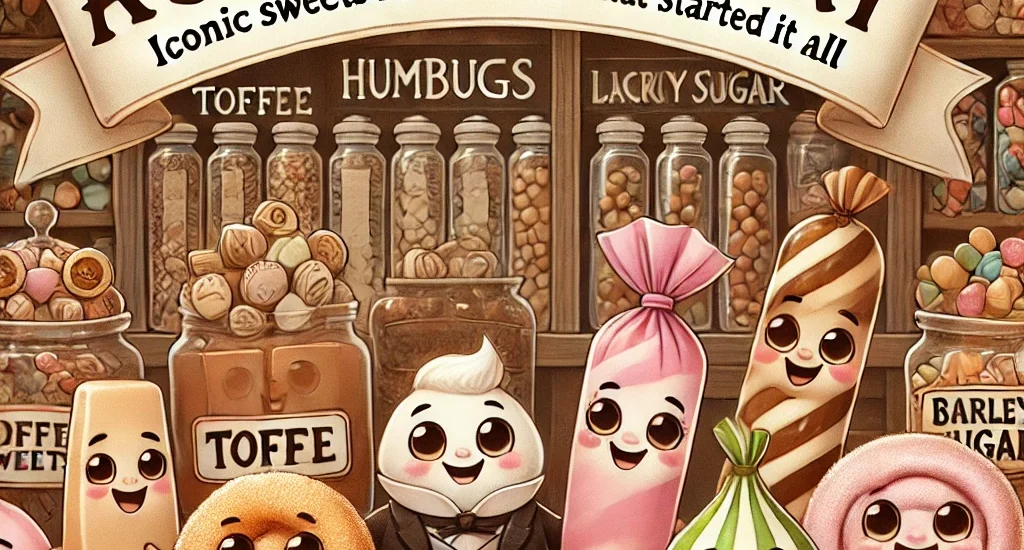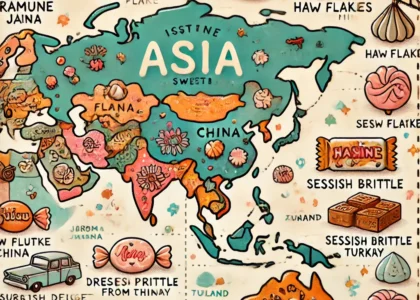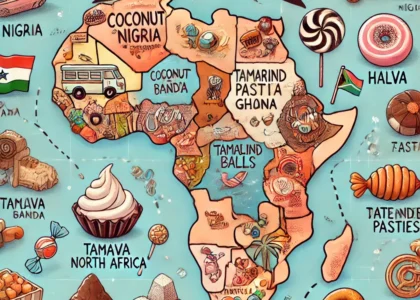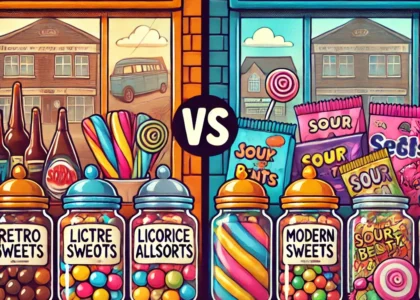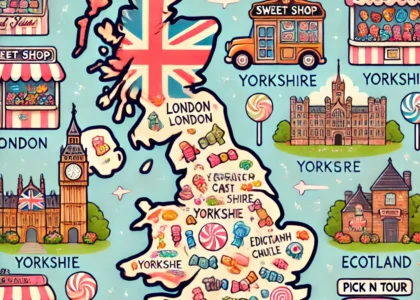Long before neon wrappers, fizzy centres, and Instagrammable chocolate bombs, there were simpler, iconic sweets that laid the foundation for everything we love today. The early 1900s was a golden era for confectionery — when sugar was a luxury, sweet shops were magical emporiums, and a penny could stretch further than you’d believe.
As we step back in time, here’s a closer look at the sweets that defined the early 20th century and sparked a nation’s enduring love affair with confectionery.
1. Barley Sugar
Few sweets are more associated with the turn of the century than barley sugar. Hard, golden, and often twisted into ornate shapes, it was a staple in apothecaries and later in Victorian-era sweet shops. Made with boiled sugar and barley water, this treat was considered medicinal before it became a beloved classic.
2. Humbugs
Striped and minty, humbugs were as much a part of granddad’s coat pocket as a handkerchief and a sixpence. With their signature peppermint flavour and chewy centre (often toffee), humbugs date back to the 1800s but remained hugely popular throughout the early 1900s. They were often handmade and sold by weight in glass jars.
3. Liquorice Allsorts
Created entirely by accident in 1899, Liquorice Allsorts quickly became a staple sweet in Edwardian Britain. Their colourful layers and varied textures made them a novelty, while the strong aniseed flavour gave them an unmistakable grown-up edge. They were considered sophisticated and were often gifted in decorative tins.
4. Aniseed Balls
Hard, shiny, and long-lasting, aniseed balls were the original challenge sweet. Their intense, aromatic flavour came from oil of anise, and their smooth exterior made them last for ages — perfect for making your pocket money go further. Often used in parlour games and schoolyard dares, they’re a spicy reminder of simpler treats.
5. Rhubarb and Custard
Though it later became a flavour found in chews and boiled sweets, rhubarb and custard started as a classic flavour pairing in puddings and jams. By the early 20th century, the sweet version — a pink and yellow boiled candy — had become a staple in British sweet shops, loved for its balance of tart and creamy.
6. Pear Drops
These brightly coloured, fruity boiled sweets were introduced in the late 19th century and were immensely popular in the 1900s. Often pink and yellow with a strong artificial pear flavour, they were made using isoamyl acetate — the very essence of sweet shop nostalgia. Pear drops were a simple pleasure that made rationing years feel a bit more bearable.
7. Sherbet Lemons
Hard on the outside, fizzy in the middle, sherbet lemons offered both patience and payoff. These sweets became widely popular in the early 20th century, long before Willy Wonka’s golden ticket immortalised them again. Their lemony tang and surprise sherbet centre made them a fan favourite across generations.
8. Clove Balls
Intensely spicy and somewhat medicinal, clove balls were a common sweet in post-Edwardian Britain. Much like aniseed balls, they were long-lasting and had a distinct flavour that older generations appreciated. Though less common today, they’re a window into an era when sweets didn’t need to be overly sweet to satisfy.
9. Everton Mints
Named after the Liverpool district where they were made, Everton Mints were first sold in the early 20th century and quickly gained nationwide popularity. These black-and-white striped boiled sweets had a chewy toffee centre and a refreshing mint outer shell — the best of both worlds. Often associated with football fans and older relatives, they’re still available today, virtually unchanged.
10. Acid Drops
Don’t be fooled by the name—acid drops were a citrus lover’s dream. Sharp, tangy, and coated in a dusting of icing sugar, they delivered a mouth-puckering punch that was oddly addictive. Often sold by the quarter-pound in brown paper bags, acid drops proved that sweets didn’t need to be subtle to be satisfying.
The Iconic Sweet Experience of the 1900s
In the early 1900s, sweets were more than just treats — they were part of a wider cultural ritual. Children would spend their pennies on “a quarter of” their favourite boiled sweets, carefully weighed out by the shopkeeper and scooped into paper cones or glass jars.
Packaging was minimal, flavours were bold, and textures were everything. Without preservatives or artificial colours, many sweets were made in small batches and reflected the regional tastes of the time. Some even doubled as cough remedies, breath fresheners, or digestive aids.
Sweets Through War and Rationing
During both World Wars, sugar rationing dramatically changed how sweets were made and sold. Some confectioners pivoted to barley or honey-based alternatives, while others simply disappeared. When rationing ended in the 1950s, there was a massive resurgence of traditional sweets, and many 1900s-era favourites made a triumphant return.
This era created a deep emotional connection between sweets and comfort—a connection that still lingers today.
Why We Still Crave the Classics
Many sweets from the early 20th century are still available today, either in specialist retro sweet shops or modernised for today’s market. Their appeal lies in their simplicity and the stories they carry: the sweets your grandparents gave you, the ones hidden in old tins, or the type found in a high street sweet shop that hasn’t changed since 1928.
They offer more than just flavour—they offer a sensory link to the past.
Final Thoughts
Sweets from the 1900s aren’t just sugar and flavour—they’re history, tradition, and identity wrapped in paper and sold by the ounce. Whether it’s the sharpness of an acid drop or the creamy core of an Everton Mint, these retro delights remind us that good taste never goes out of style.
So next time you walk past a jar of barley sugar or unwrap a sherbet lemon, take a moment to savour the century-old craftsmanship and the timeless joy it still brings.

